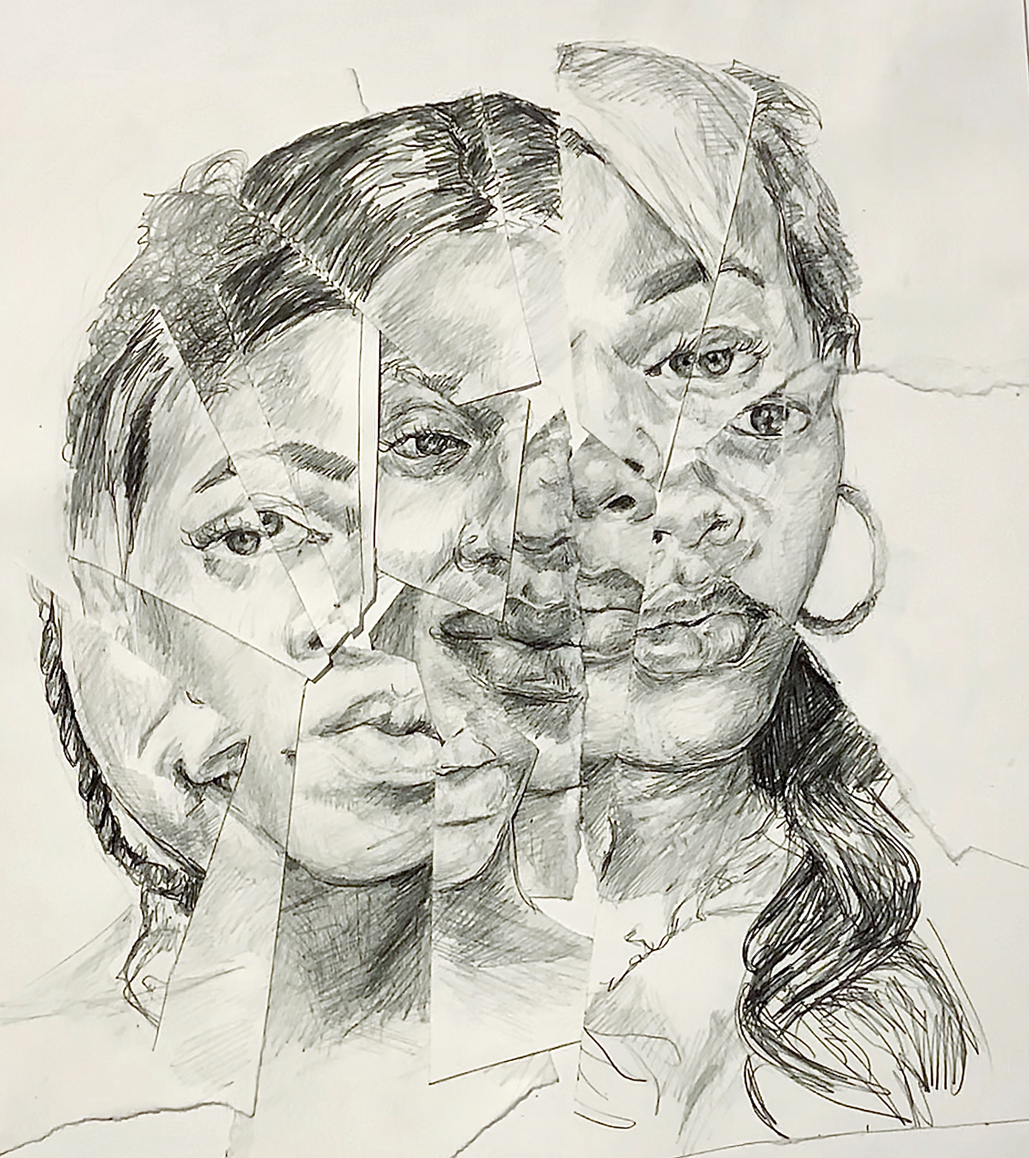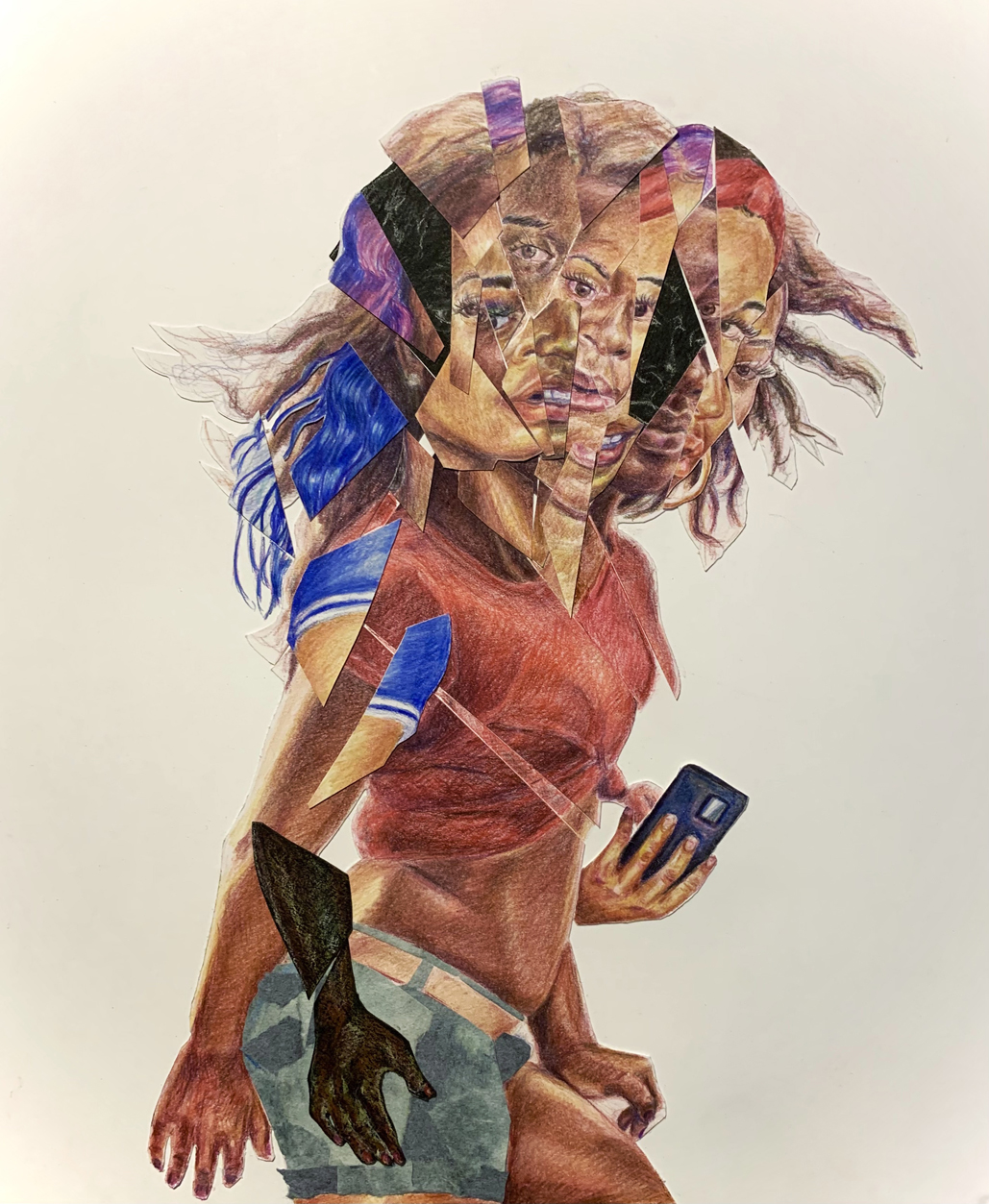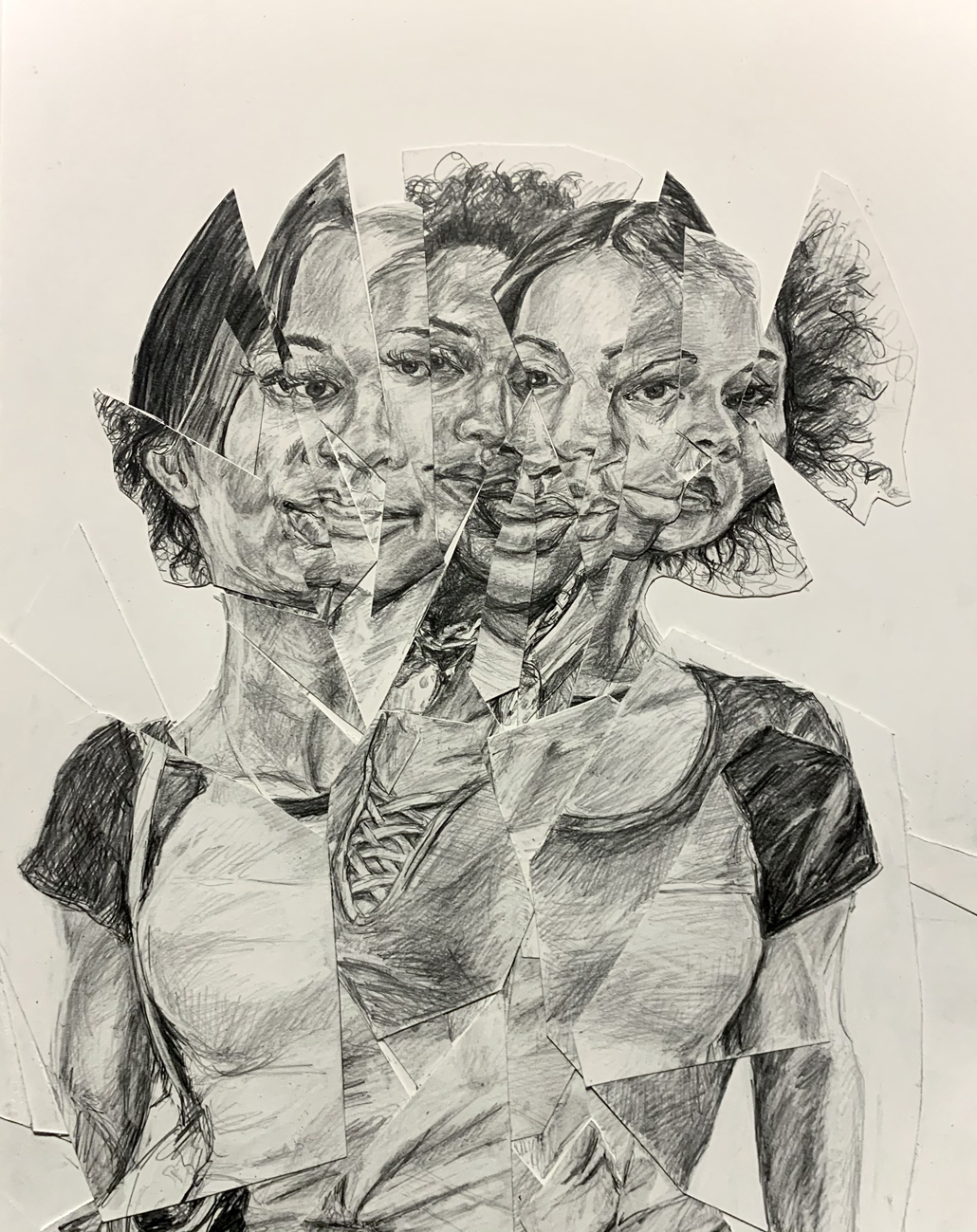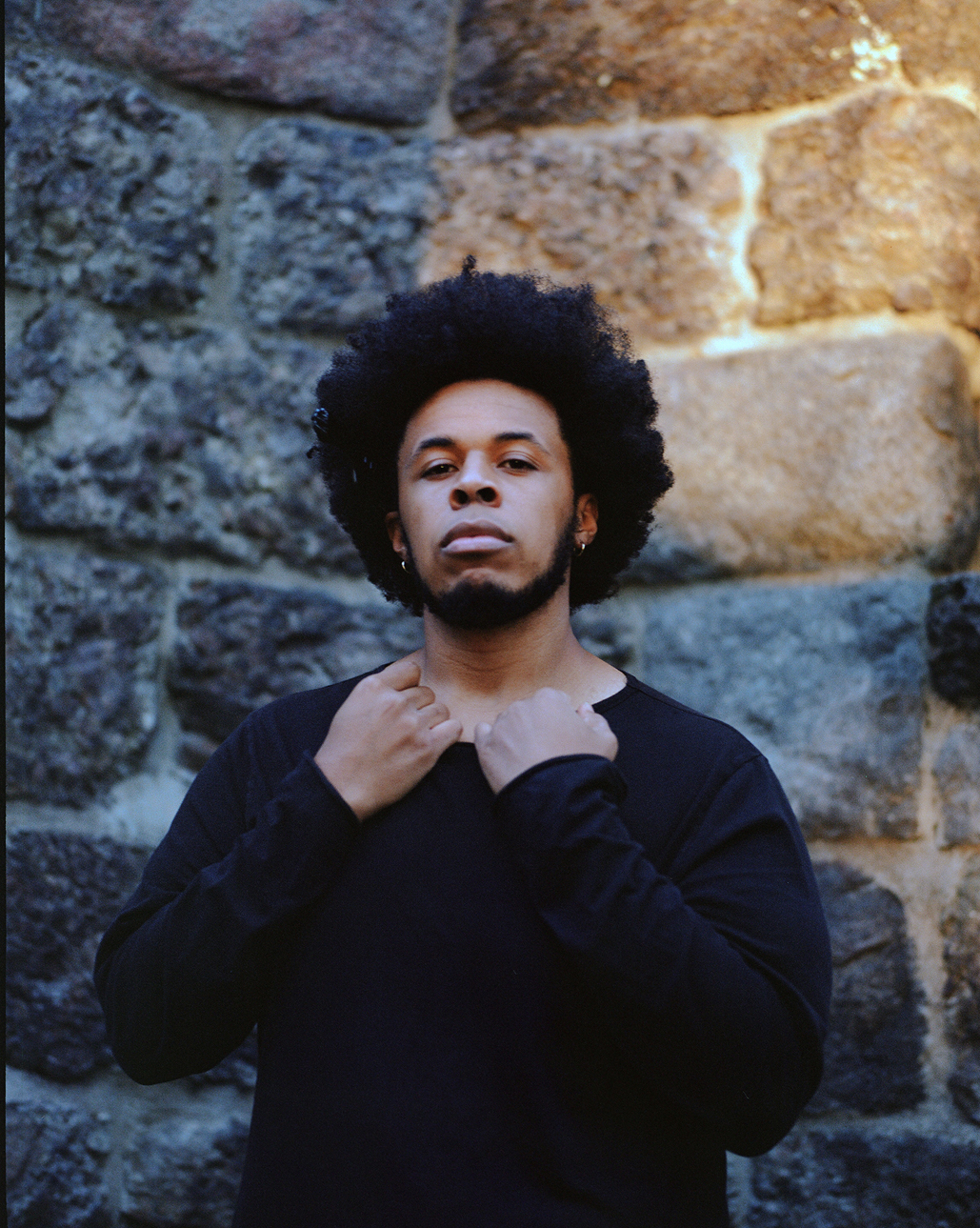
ARTWORKS BY ANTHONY PEYTON YOUNG | PORTRAITS BY NORBERT GARCIA JR.
Anthony Peyton Young
By making portraits of trans and non-binary people in memoriam, the Boston-based artist faces the challenges of representation.
How do you represent a person who is no longer here? How do you humanize someone who has already been dehumanized? George Floyd’s murder, along with so many others before and since, has become a lightning rod for this discussion. Should images of police brutality and its victims be circulated to demand systemic change by spreading awareness or do these images desensitize us to horrific violence, making a spectacle of Black death? Since the beginning of 2020, at least 40 transgender and gender-nonconforming people were fatally shot or killed by other violent means, the majority Black and Latinx transgender women. Representing these individuals has its own politics of optics; often the media uses the last photograph taken or whatever pictures their family allows for publication. But the memory of someone does not exist in a snapshot, or to be more clear, a photo is maybe best used more for rejogging the recollections of those who actually knew the person rather than providing real, substantial context for a life. Perhaps portraiture offers an opportunity to better render the complexity and the humanity of those whose lives ended tragically, but who were so much more than just victims.
Artist Anthony Peyton Young’s ongoing project Say Their Names memorializes Black lives through prismatic fragmented collaged portraits. His series started representing individuals taken by police brutality, but it’s since expanded to include all different Black lives, including transgender and gender-nonconforming people of color who have been the victims of hate crimes. While Anthony believes positive queer role models and images of transgender women as powerful, prosperous, and glamorous are important, he also demands we do not ignore the dark reality of the continuous violence against Black bodies. “If you don’t pay attention, people will try to erase history,” he asserts. “If you ignore an atrocity, you run the risk of it happening again.”
Young is proud of the fact he was “raised by women.” From a young age his mother and aunts introduced him to music and fashion and took him to concerts and museums, and though his father died before he came out, his mother has always been supportive of his queerness. “Charleston, West Virginia is not very diverse,” he explains of his hometown, “and people there are often creative but do not think of it as a career. Sometimes I felt like I stood out like a sore thumb.” At age 13, it was one of his aunts who suggested to his mother that he start taking private art lessons, and when the family could no longer afford them, the program let him continue for free.
Art school was a balancing act for Young, who recently earned an MFA from the School of the Museum of Fine Arts, Tufts University in Boston. In some ways he sees college as a cult or pyramid scheme, with its sky-high tuition, but he also benefited from the critiques and technical instruction. “Don’t go against the grain too much but know who you are,” Anthony says, explaining how he approached grad school. “I had to be careful because some professors can help you develop, while others can give you advice that may derail you.” As a queer person of color, he’s navigated sometimes feeling insecure making artwork about race or gender. Once a classmate accused him of taking “a step backwards” for using bleach in portraits — incorporating materials like bleach, chalk, and asphalt paper is symbolic for Young, a way of referencing how Black bodies are made vulnerable through policing, social media, and cultural imprinting. Defending his work, he recalls, “Learning from my professors, I experimented and began to call out others when I saw my artistic freedom being questioned.” That being said, he invites discussion. He’s interested in arguments Howardena Pindell has made against fellow artist Kara Walker’s use of negative African-American stereotypes and he closely followed the controversy concerning protests against the inclusion of Dana Schutz’s abstract painting of Emit Till’s open casket in the 2017 Whitney Biennial.
Murder turns full lives into lists of names and dates. The more names there are, the more difficult it becomes to tell their stories. By using collage in his portraits, Young gestures at our inability to hold on to all the details. Cutting and pasting, cleaving and weaving, collages are like memory — a layering and overlapping of past and present. Offering combination and fracture, deconstruction and reconstruction, collage is a transmutable medium. There is a chaotic energy, a stressfulness that pervades Young’s work; his subjects do not rest in peace. His collages do not focus on the moment of death, but instead locate the horror of murder in its negation of a future and its promise of a tainted memory.
 “Say Their Names: VII” (2020). Nina Pop (died May 3, 2020, age 28), Dominique “Rem’mie” Fells (died June 9, 2020, age 27), Brian “Egypt” Powers (died June 13, 2020, age 43), Merci Mack (died June 30, 2020, age 22), Queasha Hardy (died July 27, 2020, age 22), Aerrion Burnett (died September 19, 2020, age 37), Felycya Harris (died October 3, 2020, age 33).
“Say Their Names: VII” (2020). Nina Pop (died May 3, 2020, age 28), Dominique “Rem’mie” Fells (died June 9, 2020, age 27), Brian “Egypt” Powers (died June 13, 2020, age 43), Merci Mack (died June 30, 2020, age 22), Queasha Hardy (died July 27, 2020, age 22), Aerrion Burnett (died September 19, 2020, age 37), Felycya Harris (died October 3, 2020, age 33).
 “Say Their Names: II” (2019). Claire Legato (died May 14, 2019, age 21), Muhlaysia Booker (died May 18, 2019, age 23), Chynal Lindsey (died June 1, 2019, age 26), Chanel Scurlock (died June 11, 2019, age 23), Brooklyn Lindsey (died June 25, 2019, age 32), Tracy Single (died July 30, 2019, age 22), Bee Love Slater (died September 4, 2019, age 23).
“Say Their Names: II” (2019). Claire Legato (died May 14, 2019, age 21), Muhlaysia Booker (died May 18, 2019, age 23), Chynal Lindsey (died June 1, 2019, age 26), Chanel Scurlock (died June 11, 2019, age 23), Brooklyn Lindsey (died June 25, 2019, age 32), Tracy Single (died July 30, 2019, age 22), Bee Love Slater (died September 4, 2019, age 23).
 “Say Their Names: I” (2019). Dana Martin (died January 6, 2019, age 31), Ashanti Carmon (died March 30, 2019, age 27), Claire Legato (died May 14, 2019, age 21), Muhlaysia Booker (died May 18, 2019, age 23), Michelle “Tamika” Washington (died May 19, 2019, age 40), Chynal Lindsey (died June 1, 2019, age 26), Layleen Cubilette-Polanco Xtravaganza (died June 7, 2019, age 27), Chanel Scurlock (died June 11, 2019, age 23).
“Say Their Names: I” (2019). Dana Martin (died January 6, 2019, age 31), Ashanti Carmon (died March 30, 2019, age 27), Claire Legato (died May 14, 2019, age 21), Muhlaysia Booker (died May 18, 2019, age 23), Michelle “Tamika” Washington (died May 19, 2019, age 40), Chynal Lindsey (died June 1, 2019, age 26), Layleen Cubilette-Polanco Xtravaganza (died June 7, 2019, age 27), Chanel Scurlock (died June 11, 2019, age 23).
 “Say Their Names: VI” (2020). Nina Pop (died May 3, 2020, age 28), Tony McDade (died May 27, 2020, age 38), Dominique “Rem’mie” Fells (died June 9, 2020, age 27), Riah Milton (died June 9, 2020, age 25), Brian “Egypt” Powers (died June 13, 2020, age 43), Queasha Hardy (died July 27, 2020, age 22), Felycya Harris (died October 3, 2020, age 33), Brooklyn Deshuna (died October 7, 2020, age 20).
“Say Their Names: VI” (2020). Nina Pop (died May 3, 2020, age 28), Tony McDade (died May 27, 2020, age 38), Dominique “Rem’mie” Fells (died June 9, 2020, age 27), Riah Milton (died June 9, 2020, age 25), Brian “Egypt” Powers (died June 13, 2020, age 43), Queasha Hardy (died July 27, 2020, age 22), Felycya Harris (died October 3, 2020, age 33), Brooklyn Deshuna (died October 7, 2020, age 20).
 “Say Their Names: VIII” (2020). Brayla Stone (died June 25, 2020, age 17), Shaki Peters (died July 1, 2020, age 32), Bree Black (died July 28, 2020, age 27), Skylar Heath (died November 4, 2020, age 20), Asia Jynaé Foster (died November 20, 2020, age 22), Chae’Meshia Simms (died November 23, 2020, age 33).
“Say Their Names: VIII” (2020). Brayla Stone (died June 25, 2020, age 17), Shaki Peters (died July 1, 2020, age 32), Bree Black (died July 28, 2020, age 27), Skylar Heath (died November 4, 2020, age 20), Asia Jynaé Foster (died November 20, 2020, age 22), Chae’Meshia Simms (died November 23, 2020, age 33).
 “Say Their Names: IV” (2020). Paris Cameron (died May 25, 2019, age 20), Layleen Cubilette-Polanco Xtravaganza (died June 7, 2019, age 27), Brooklyn Lindsey (died June 25, 2019, age 32), Tracy Single (died July 30, 2019, age 22), Bee Love Slater (died September 4, 2019, age 23), Breonna Be’Be Hill (died October 14, 2019, age 30).
“Say Their Names: IV” (2020). Paris Cameron (died May 25, 2019, age 20), Layleen Cubilette-Polanco Xtravaganza (died June 7, 2019, age 27), Brooklyn Lindsey (died June 25, 2019, age 32), Tracy Single (died July 30, 2019, age 22), Bee Love Slater (died September 4, 2019, age 23), Breonna Be’Be Hill (died October 14, 2019, age 30).
 “Say Their Names: IX” (2020). Brayla Stone (died June 25, 2020, age 17), Shaki Peters (died July 1, 2020, age 32), Marilyn Cazares (died July 13, 2020, age 22), Kee Sam (died August 12, 2020, age 24), Angel Unique (died October 25, 2020, age 25), Skylar Heath (died November 4, 2020, age 20).
“Say Their Names: IX” (2020). Brayla Stone (died June 25, 2020, age 17), Shaki Peters (died July 1, 2020, age 32), Marilyn Cazares (died July 13, 2020, age 22), Kee Sam (died August 12, 2020, age 24), Angel Unique (died October 25, 2020, age 25), Skylar Heath (died November 4, 2020, age 20).
 Anthony Peyton Young at Franklin Park, Boston, Massachusetts, November 2020.
Anthony Peyton Young at Franklin Park, Boston, Massachusetts, November 2020.
This story was printed in GAYLETTER Issue 13, get a copy here.